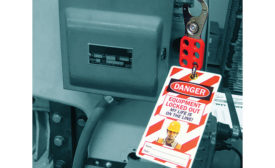Home » Keywords: » lockout/tagout training
Items Tagged with 'lockout/tagout training'
ARTICLES
Smartphone, tablets & lockout-tagout
View electronic images of energy isolation points
November 28, 2018
Become a Leader in Safety Culture
Build your knowledge with ISHN, covering key safety, health and industrial hygiene news, products, and trends.
JOIN TODAYCopyright ©2025. All Rights Reserved BNP Media.
Design, CMS, Hosting & Web Development :: ePublishing



